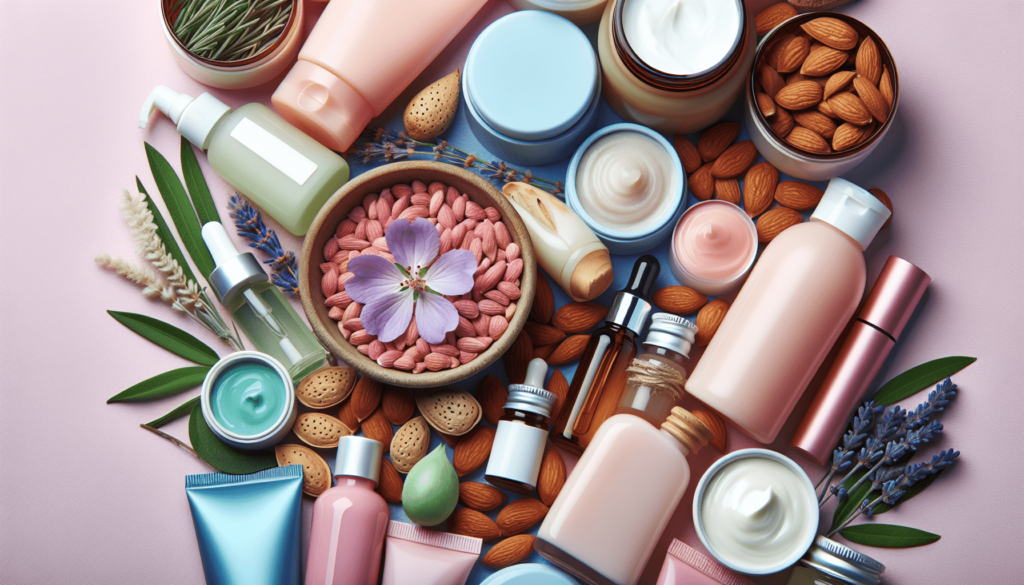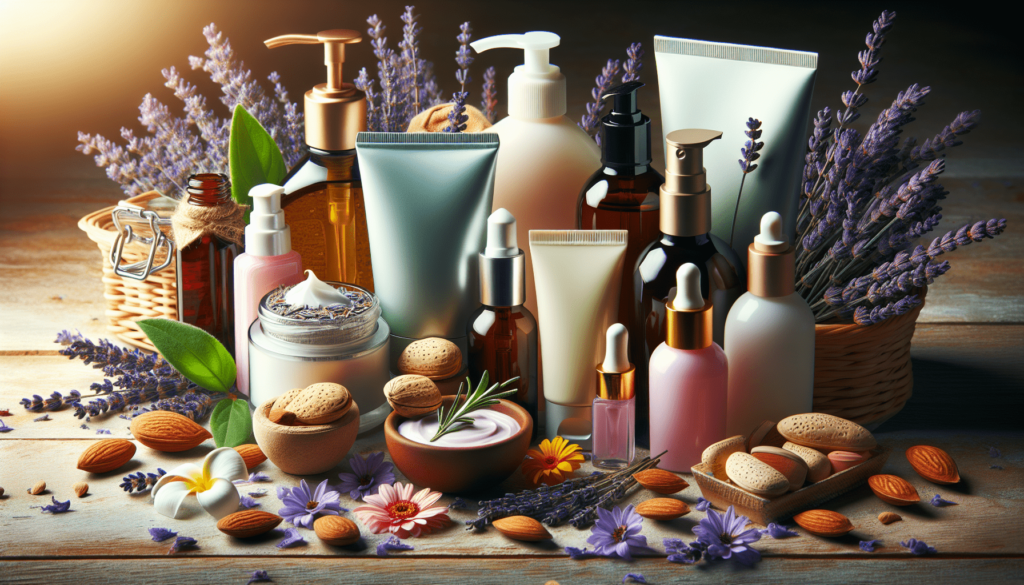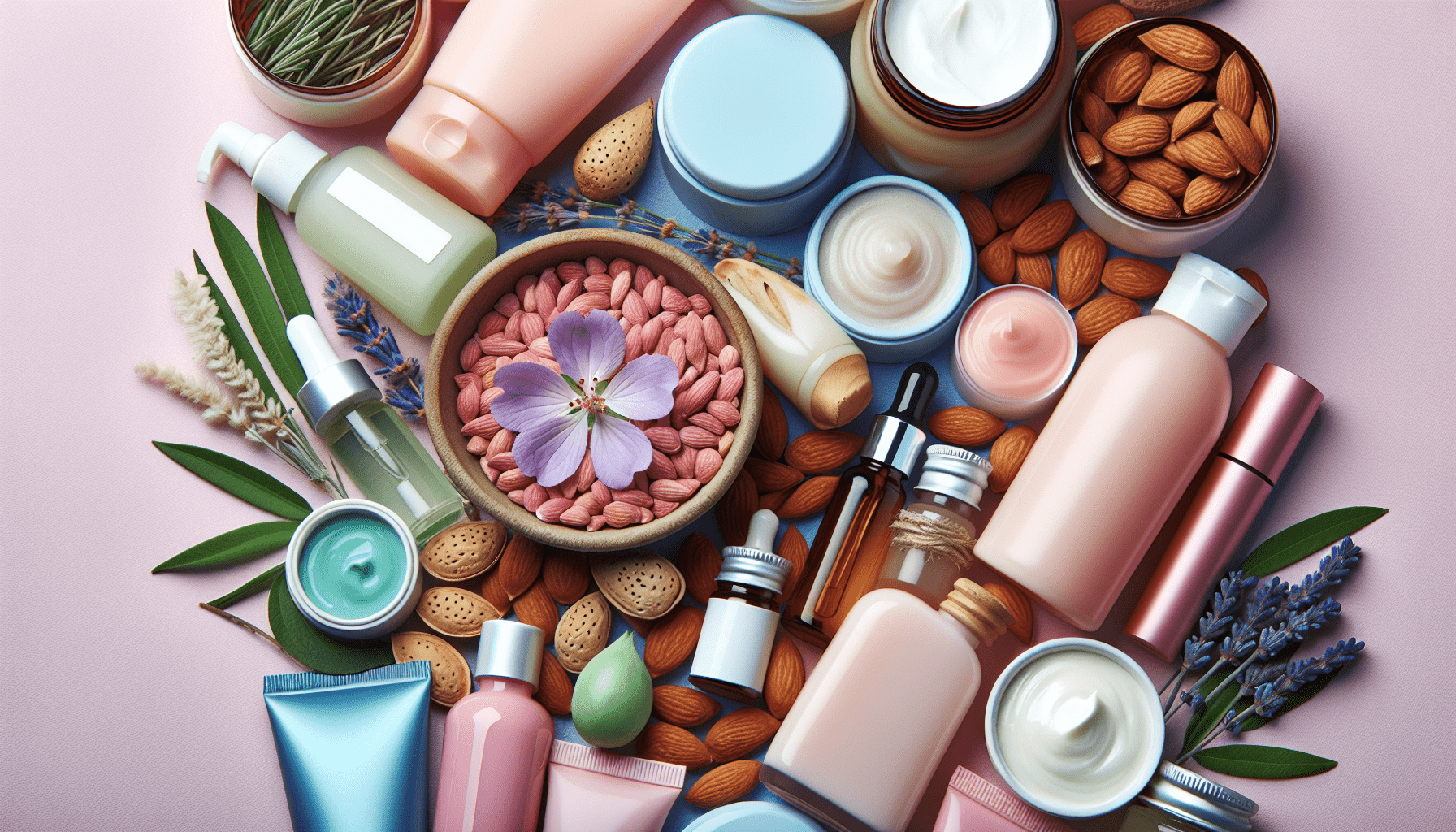When navigating the world of personal care and beauty products, it’s essential to be aware of common allergens that might be hiding in your favorite items. This article, “Common Allergens In Personal Care And Beauty Products,” explores various substances that could trigger allergies, helping you make informed choices for your skincare and beauty routines. By recognizing these common culprits, you can avoid potential allergic reactions and ensure that your beauty regimen is as safe and enjoyable as possible. Have you ever wondered why your skin suddenly becomes itchy or red after using a new shampoo or face cream? You might be experiencing a reaction to common allergens found in personal care and beauty products. These products are supposed to make us look and feel better, yet sometimes they can cause unexpected problems. This article aims to help you identify and understand the most common allergens in these everyday items so that you can make informed choices and protect your skin.

Understanding Allergens
Allergens are substances that can cause an allergic reaction. When you come into contact with an allergen, your immune system overreacts, treating it as a harmful invader. This reaction can lead to a variety of symptoms, ranging from mild to severe. Understanding the common allergens in personal care and beauty products can help you avoid them and maintain healthier skin.
What Happens During an Allergic Reaction?
During an allergic reaction, your body’s immune system triggers the release of histamines and other chemicals. These substances cause inflammation and irritation, leading to symptoms such as itching, redness, swelling, and even blistering. In more severe cases, allergens can cause respiratory issues or anaphylaxis, a life-threatening condition.
Why Are Allergens in Personal Care Products?
Many ingredients in personal care products are used for their beneficial properties, such as moisturizing the skin, providing fragrance, or preserving the product. However, some of these ingredients can trigger allergic reactions in sensitive individuals. It’s essential to read product labels and be aware of the most common allergens to protect yourself.
Common Allergens in Personal Care Products
Knowing which ingredients are likely to cause problems can help you avoid common allergens. Below are detailed explanations of several leading allergens found in beauty and personal care products.
Fragrances
Fragrances are one of the most common causes of allergic reactions in personal care products. They can be found in almost anything from shampoos to lotions to deodorants.
Why Are Fragrances Problematic?
Fragrances consist of complex mixtures of natural and synthetic ingredients. This complexity makes it challenging to pinpoint the exact cause of an allergic reaction. Additionally, a single fragrance can be composed of dozens, if not hundreds, of different aromatic compounds, increasing the likelihood of a reaction.
| Pros | Cons |
|---|---|
| Pleasant smell | High risk of allergic reactions |
| Used for emotional well-being | May contain undisclosed harmful chemicals |
Preservatives
Preservatives are added to beauty products to prevent bacterial and mold growth, extending the product’s shelf life. However, some preservatives can cause allergic reactions.
Common Preservatives to Watch Out For
- Parabens: Widely used in cosmetics but linked to hormone disruption and skin sensitivities.
- Formaldehyde-Releasers: These include DMDM hydantoin, imidazolidinyl urea, and quaternium-15. They release small amounts of formaldehyde to act as preservatives but can cause skin irritation.
- Methylisothiazolinone (MIT) and Methylchloroisothiazolinone (CMIT): Common in lotions, shampoos, and other products, these preservatives can cause severe allergic reactions.
| Ingredient | Potential Reactions |
|---|---|
| Parabens | Hormone disruption, sensitive skin |
| Formaldehyde-Releasers | Skin irritation, dermatitis |
| MIT and CMIT | Severe allergic reactions |
Artificial Colorants
Artificial colorants are added to personal care products to make them visually appealing, but they can be troublesome for sensitive skin.
Types of Hazardous Artificial Colorants
- FD&C Colors: These are colors certified for use in foods, drugs, and cosmetics. Some, like Yellow No. 5, have been associated with skin reactions.
- Coal Tar Dyes: Used in hair dyes and some cosmetics, they can be carcinogenic and cause skin irritation.
| Type | Potential Issues |
|---|---|
| FD&C Colors | Skin reactions, hypersensitivity |
| Coal Tar Dyes | Carcinogenic, skin irritation |
Natural Allergens
It’s not just synthetic chemicals that can cause issues; natural ingredients can also be problematic.
Essential Oils
While essential oils are often marketed as a natural alternative to synthetic fragrances, they can still cause allergic reactions.
Common Essential Oils That Cause Reactions
- Lavender Oil: While it has calming properties, it can cause skin irritation for some people.
- Tea Tree Oil: Known for its antibacterial properties, but can cause skin redness and swelling.
| Essential Oil | Benefits | Potential Issues |
|---|---|---|
| Lavender Oil | Calming, stress relief | Skin irritation |
| Tea Tree Oil | Antibacterial | Redness, swelling |
Natural Extracts
Ingredients derived from plants are commonly used in personal care products but can also trigger allergic reactions.
Examples of Natural Extracts
- Chamomile Extract: Known for its soothing properties, it can cause reactions in people allergic to ragweed.
- Aloe Vera: Widely used for its moisturizing benefits but can cause irritation for some.
| Natural Extract | Benefits | Potential Issues |
|---|---|---|
| Chamomile Extract | Soothing, anti-inflammatory | Allergic reactions in those sensitive to ragweed |
| Aloe Vera | Moisturizing, soothing | Skin irritation |
Contact Allergens
Contact allergens can prompt reactions upon direct contact with the skin. An allergic reaction may not occur immediately and could develop over time, making it difficult to identify the cause.
Nickel
Nickel is often found in metal implements like tweezers, eyelash curlers, and even in some makeup products.
| Pros | Cons |
|---|---|
| Strong and durable | High risk of causing contact dermatitis |
Lanolin
Lanolin is derived from the wool of sheep and used in numerous moisturizers and balms for its hydrating properties.
| Pros | Cons |
|---|---|
| Great moisturizer | May cause allergic reactions, especially in those with wool allergies |
Propylene Glycol
Often used as a vehicle in creams, lotions, and other personal care products, propylene glycol can cause skin irritation and allergic reactions.
| Pros | Cons |
|---|---|
| Improves product texture | Skin irritation, contact allergies |

How to Identify Allergic Reactions
Recognizing an allergic reaction can be challenging because symptoms can vary widely. However, knowing the common signs can help you identify a problem early.
Common Symptoms
- Redness: Skin turns red and inflamed.
- Itching: Persistent itching, with or without visible rash.
- Swelling: Areas of the skin may become swollen.
- Blistering: Small fluid-filled blisters may form.
Testing for Allergies
If you suspect you’re allergic to an ingredient, patch testing is a helpful method for identifying the culprit. Consult your dermatologist for a professional patch test, or perform a simple patch test at home:
- Apply a small amount of the product on the inside of your wrist or behind your ear.
- Wait 24-48 hours and observe for any reactions.
Keeping a Symptom Diary
Keeping a symptom diary can help you track reactions and identify patterns. Note down the products you use, the time of day, and any symptoms you experience.
How to Protect Yourself
Once you’ve identified common allergens and potential reactions, adopting precautions is key to managing your skin health and safeguarding against allergies.
Reading Labels
Being diligent about reading labels can help you avoid problematic ingredients. Look for keywords like “fragrance-free,” “hypoallergenic,” and “paraben-free.” However, keep in mind that these labels are not foolproof.
Opting for Patch Testing
As previously mentioned, patch testing new products before full application can save you from severe reactions. Always perform this simple test when trying a new product.
Choosing Certified Products
Look for products certified by dermatologists or recognized organizations. Certifications can provide added assurance that the product is formulated to minimize allergic reactions.
Consulting a Dermatologist
If you struggle with frequent allergic reactions, consulting a dermatologist can provide personalized advice and recommendations tailored to your skin type and sensitivities.
Homemade Alternatives
For those who prefer to avoid commercial products, homemade beauty solutions can be a safer alternative. Ingredients such as aloe vera, coconut oil, and oatmeal can be used to create soothing, natural products without the complications of synthetic additives.
Alternatives to Common Allergens
Making adjustments based on your skin’s needs often involves finding suitable alternatives. Here’s a guide to some alternatives for commonly problematic ingredients.
Fragrance-Free Products
Choose fragrance-free products whenever possible. Remember, unscented does not mean fragrance-free. Unscented products may still contain fragrances to mask other odors, whereas fragrance-free means no perfumes were added.
Natural Preservatives
If preservatives commonly cause issues, opt for natural ones. Ingredients like vitamin E and grapefruit seed extract can act as natural preservatives.
| Natural Alternative | Benefits | | | ——————- | ———– | | | Vitamin E | Antioxidant, natural preservative | | | Grapefruit Seed Extract | Antimicrobial, natural preservative | |
Plant-Based Colorants
Instead of synthetic colorants, consider products that use plant-based dyes. While they might not provide the same vibrant colors, they are generally less irritating.
| Natural Colorant | Source |
|---|---|
| Beetroot Powder | Beets |
| Turmeric Extract | Turmeric Root |
Maintaining Overall Skin Health
Living with skin sensitivities involves more than just avoiding allergens. General good skincare practices can help minimize the risk of reactions and maintain overall skin health.
Hydration
Healthy skin starts with proper hydration. Drinking ample water and using appropriate moisturizers can help keep your skin barrier strong, reducing the likelihood of allergic reactions.
Balanced Diet
A balanced diet rich in vitamins and minerals supports skin health. Foods high in omega-3 fatty acids, vitamins A, C, and E, and antioxidants can improve your skin’s resilience.
Regular Cleansing
Gentle, regular cleansing helps remove potential allergens from the skin surface. Choose a mild, fragrance-free cleanser and avoid over-washing, which can strip the skin of natural oils and weaken its barrier function.
Sun Protection
Exposure to UV rays can exacerbate skin sensitivities. Regularly using a hypoallergenic, broad-spectrum sunscreen can protect your skin from damage and reduce the likelihood of reactions.
Conclusion: Empowering Yourself Against Allergens
Navigating the world of personal care and beauty products with sensitive skin can feel overwhelming. Yet, by understanding common allergens, recognizing symptoms, and taking proactive steps, you can make informed decisions that safeguard your skin. Remember to read labels, perform patch tests, choose certified products, and maintain a healthy skincare routine. With this knowledge, you’re well-equipped to enjoy beauty products without compromising your skin’s health.
Taking an informed, proactive approach empowers you to choose products that enhance your wellbeing without the risk of allergic reactions. So the next time you’re picking out a new moisturizer or shampoo, you’ll know exactly what to look out for, ensuring you can care for your skin confidently and comfortably.
